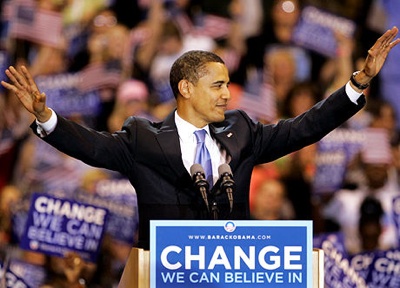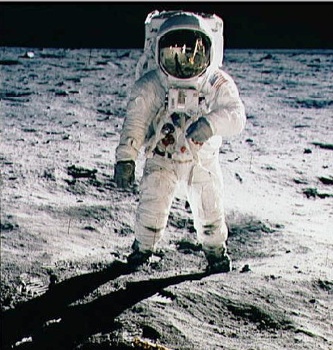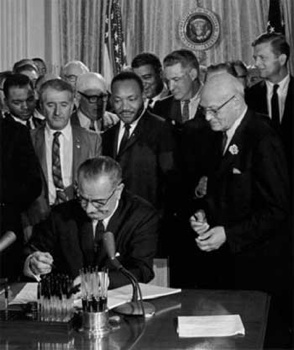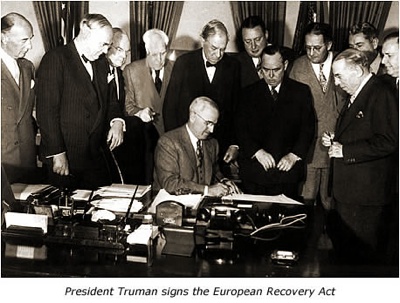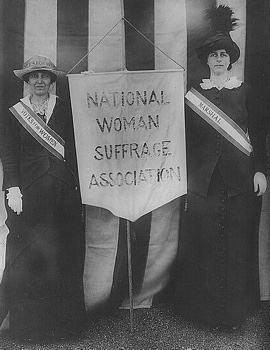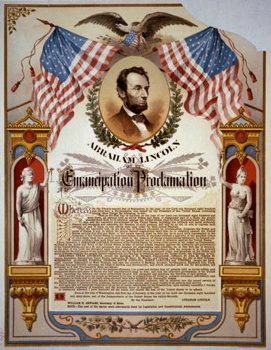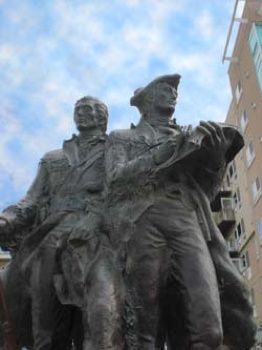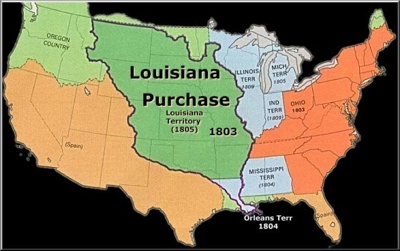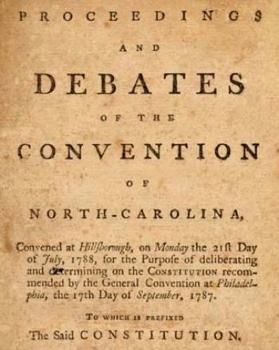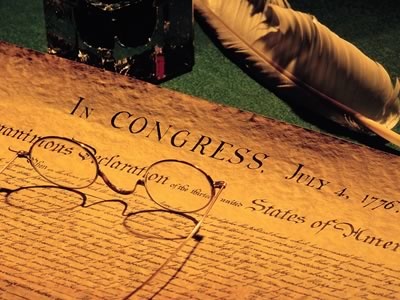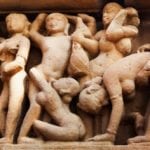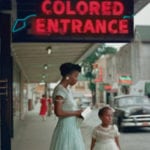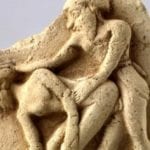 Weird Stuff
Weird Stuff  Weird Stuff
Weird Stuff  Our World
Our World 10 Ways Your Christmas Tree Is More Lit Than You Think
 Movies and TV
Movies and TV The 10 Coolest Stars to Set Sail on The Love Boat
 History
History 10 Things You Didn’t Know About the American National Anthem
 Technology
Technology Top 10 Everyday Tech Buzzwords That Hide a Darker Past
 Humans
Humans 10 Everyday Human Behaviors That Are Actually Survival Instincts
 Animals
Animals 10 Animals That Humiliated and Harmed Historical Leaders
 History
History 10 Most Influential Protests in Modern History
 Creepy
Creepy 10 More Representations of Death from Myth, Legend, and Folktale
 Technology
Technology 10 Scientific Breakthroughs of 2025 That’ll Change Everything
 Weird Stuff
Weird Stuff Ten Bizarre Facts About The Doge Meme
 Our World
Our World 10 Ways Your Christmas Tree Is More Lit Than You Think
 Movies and TV
Movies and TV The 10 Coolest Stars to Set Sail on The Love Boat
Who's Behind Listverse?

Jamie Frater
Head Editor
Jamie founded Listverse due to an insatiable desire to share fascinating, obscure, and bizarre facts. He has been a guest speaker on numerous national radio and television stations and is a five time published author.
More About Us History
History 10 Things You Didn’t Know About the American National Anthem
 Technology
Technology Top 10 Everyday Tech Buzzwords That Hide a Darker Past
 Humans
Humans 10 Everyday Human Behaviors That Are Actually Survival Instincts
 Animals
Animals 10 Animals That Humiliated and Harmed Historical Leaders
 History
History 10 Most Influential Protests in Modern History
 Creepy
Creepy 10 More Representations of Death from Myth, Legend, and Folktale
 Technology
Technology 10 Scientific Breakthroughs of 2025 That’ll Change Everything
10 Great Moments in US History
This week is thanksgiving week in the US, so it seems fitting that we should have a list especially for our American readers. This list looks at 10 of the great moments in the history of the US – ten of the reasons that you are giving thanks this week. These are in reverse chronological order, but they are also (coincidentally) very close to being in order of importance.
It was a symbolic moment in the history of the United States when the last racial barrier in American politics was overcome. Just 143 years earlier, the man who would now hold the supreme office in U.S. government could have been a possession, another man’s property. President-elect Obama said, “If there is anyone out there who still doubts that America is a place where all things are possible, who still wonders if the dream of our founders is alive in our time, who still questions the power of our democracy, tonight is your answer. “The road ahead will be long, our climb will be steep… I promise you that we as a people will get there.”
The moment seemed to generate memorable quotations. When Apollo 11, the first manned lunar mission, made contact with the surface of the moon, there was “The Eagle has landed.” When Neil Armstrong became the first man to set foot on the moon, he said, “That’s one small step for a man, one giant leap for mankind.” But the quotations didn’t end there. Frank Borman later was quoted by U.N. Secretary General U Thant as saying, “We saw the earth the size of a quarter and we recognized that there really is one world. We are all brothers.” A favorite Armstrong quote is, “I believe the good Lord gave us a finite number of heartbeats and I’ll be damned if I’m going to use up mine running up and down a street.”
The text of the bill was simple and straightforward: “No person in the United States shall on grounds of race, color, or national origin, be excluded from participation in, be denied the benefits of or be subjected to discrimination under any program or activity receiving federal financial assistance.” Overnight, it became illegal to force segregation in schools, workplaces, and housing. Racial discrimination wasn’t dead, but it was dying. The addition of “sex” as a protected category was added by a southern legislator in the hopes that Democrats relying heavily on support from labor unions would defeat the bill. Unexpectedly, the bill gave women’s rights advocates additional ammunition.
Considered by some to be the noblest undertaking in American history, and by others to be a waste of the $12,000,000,000 that was eventually spent on the plan, the European recovery program had three objectives. George Marshall, Secretary of State under President Harry Truman, designed the program to promote European production, bolster European currency, and facilitate trade after the devastating effects of World War II. The purpose was to help Europe recover as a healthy trading partner and ally, and to repel the Communist threat from Eastern Europe and the Soviet Union. Marshall laid the groundwork for a revitalized Europe and the establishment of the North Atlantic Treaty Organization. He received the Nobel Peace Prize in 1953.
The right of women to vote was achieved through decades of devoted work by determined men and women. In 1840, Elizabeth Cady Stanton and Lucretia Mott traveled to London as delegates to the World Anti-Slavery Convention. Because they were women, they were denied the right to speak. They determined to form an organization to fight for women’s equal rights. Over the years, supporters of women’s suffrage resorted to mass marches, hunger strikes, and denial of conjugal privileges to husbands who were opposed. In 1893, New Zealand became the first country to grant women the right to vote at the federal level. Australia followed suit in 1902, but it was not until 1920, when President Woodrow Wilson advocated for the women’s right as a war measure, that the 19th Amendment granted American women the right to vote. Wilson’s decision followed daily picketing of the White House by hundreds of women. By the time the amendment was passed, 500 women had been arrested there for loitering, and another 168 for obstructing traffic.
Lincoln believed that the purpose of the Civil War was to preserve the union. He wrote to Horace Greeley, “If I could save the union without freeing any slave, I would do it. If I could save the union by freeing all slaves, I would do it. If I could save the union by freeing some and leaving others alone, I would also do that.” The Emancipation Proclamation did not free slaves in states loyal to the union or in states that had been reconquered. It only freed slaves in states “in rebellion that had not laid down arms by January 1, 1863.” Nor did it make slavery illegal. That change came with the Thirteenth Amendment in 1865. It did accomplish important steps, however. Twenty thousand slaves were freed immediately, and many more rushed to join the union advance into the South. Moreover, the proclamation won approval in France and Great Britain, effectively ending the Confederate States’ hope for recognition by those countries. Ultimately, more than 4,000,000 slaves were freed.
They were not the first settlers of Northern European origin. The natives there were quite accustomed to trading with white men, and Station Camp, near where the Columbia River empties into the Pacific Ocean, had 36 houses. Moreover, the Northwest Passage they had sought did not exist. Hoping that the Missouri River would gently lead to the sea had been in vain. The Missouri and the Columbia both had huge rapids and cataracts making river travel difficult and in some places impossible. But their journey had not been without value. Arriving at the Pacific coast exactly one year, six months, and one day after leaving St. Louis, Lewis and Clark had collected plant specimens, studied new animal species, and acquired priceless information about the geography and inhabitants of what would be the western United States.
President Thomas Jefferson faced a dilemma. Napoleon Bonaparte’s aggression made it likely that New Orleans, which was paramount in international trade, and the Mississippi River, which was vital for national and international commerce, could be closed to U.S. trade. He had learned in 1801 that Spain had retroceded its territory to France in a secret compact. But the Constitution had no provision for acquiring territory. Ultimately, Jefferson took matters into his own hands and dispatched envoys to see if Napoleon would sell. The emperor, facing a war with Great Britain, realized that he was unlikely to be able to defend the territory. He decided to sell for a total cost, including forgiven debts, of $15,000,000. The purchase doubled the country, including the territory of fourteen states. Napoleon was satisfied, as well. He said, “I have given England a maritime rival who sooner or later will humble her pride.”
The Federal Convention which had drafted the Constitution had no authority to impose it. An elaborate four-step plan for ratification was adopted. 1. The Constitution was submitted to Congress. 2. Congress transmitted the Constitution to the state legislatures. 3. Each state elected delegates to attend a convention and decide whether to ratify. 4. Ratification by at least nine of the thirteen colonies was required. This plan avoided the hostility of states’ rights advocates and made the Constitution less vulnerable to changes of opinion. In September of 1787, the Congress bitterly debated the Constitution and ultimately submitted it to the states with neither an endorsement nor a condemnation. The Constitution was validly before the people. The first five ratifications came quickly, but Massachusetts demanded a means of amending the document as a condition of ratification. This demand ultimately led to the passage of the first ten amendments, known as the Bill of Rights. Final acceptance of the document by the states took place in July, 1788.
Arriving at consensus was no small feat. At the beginning of the month, only eight of the thirteen colonies were in favor of independence, with New York abstaining from the vote pending a local decision. The American Prohibitory Act had made all vessels and cargoes from the colonies forfeit to the Crown, and in May King George had issued an order hiring German mercenaries to fight the colonies, which he now considered to be in total rebellion. Still, many believed the rift could be patched up. Jefferson was dispatched by a committee to write up a declaration explaining the views of those who favored independence. He completed the document in two weeks, starting on June 11, 1776. Then Benjamin Franklin and John Adams made additions and deletions, and at last it was presented to the full congress, where redaction went on until late at night on July 3. Finally, on July 4, 1776, all thirteen colonies signed “…the fragile object which bears so great a weight of meaning to our people.”
